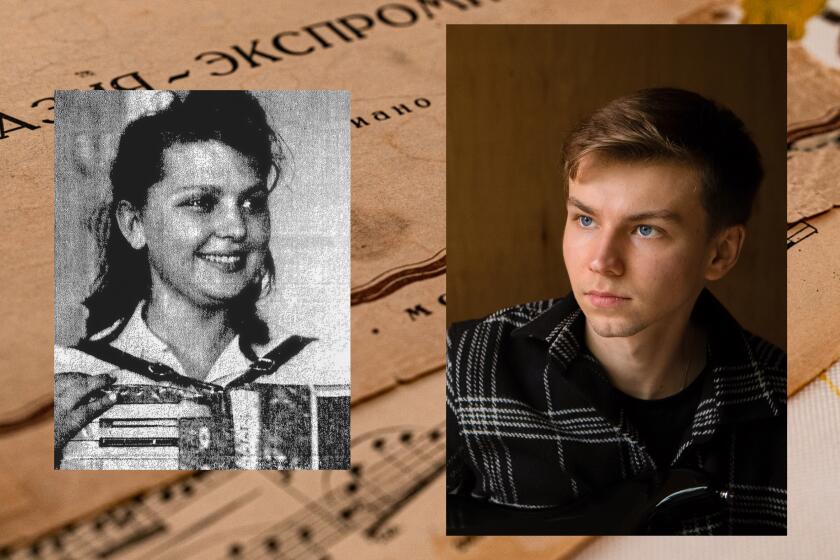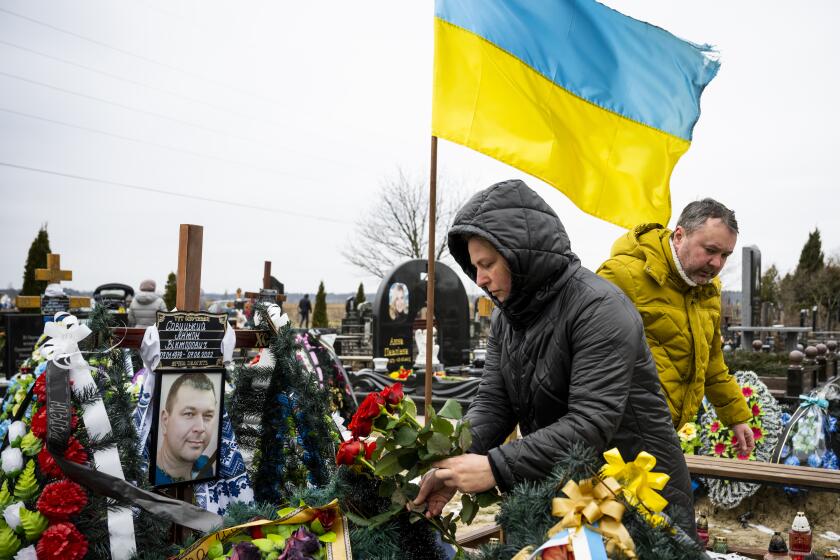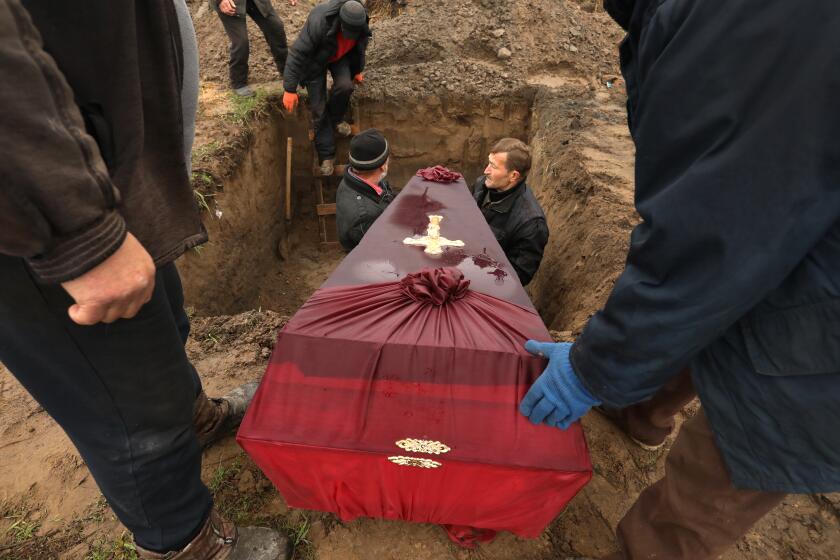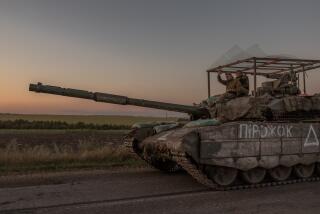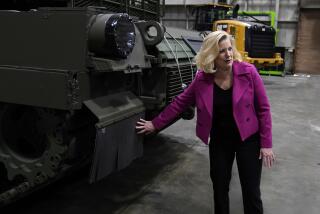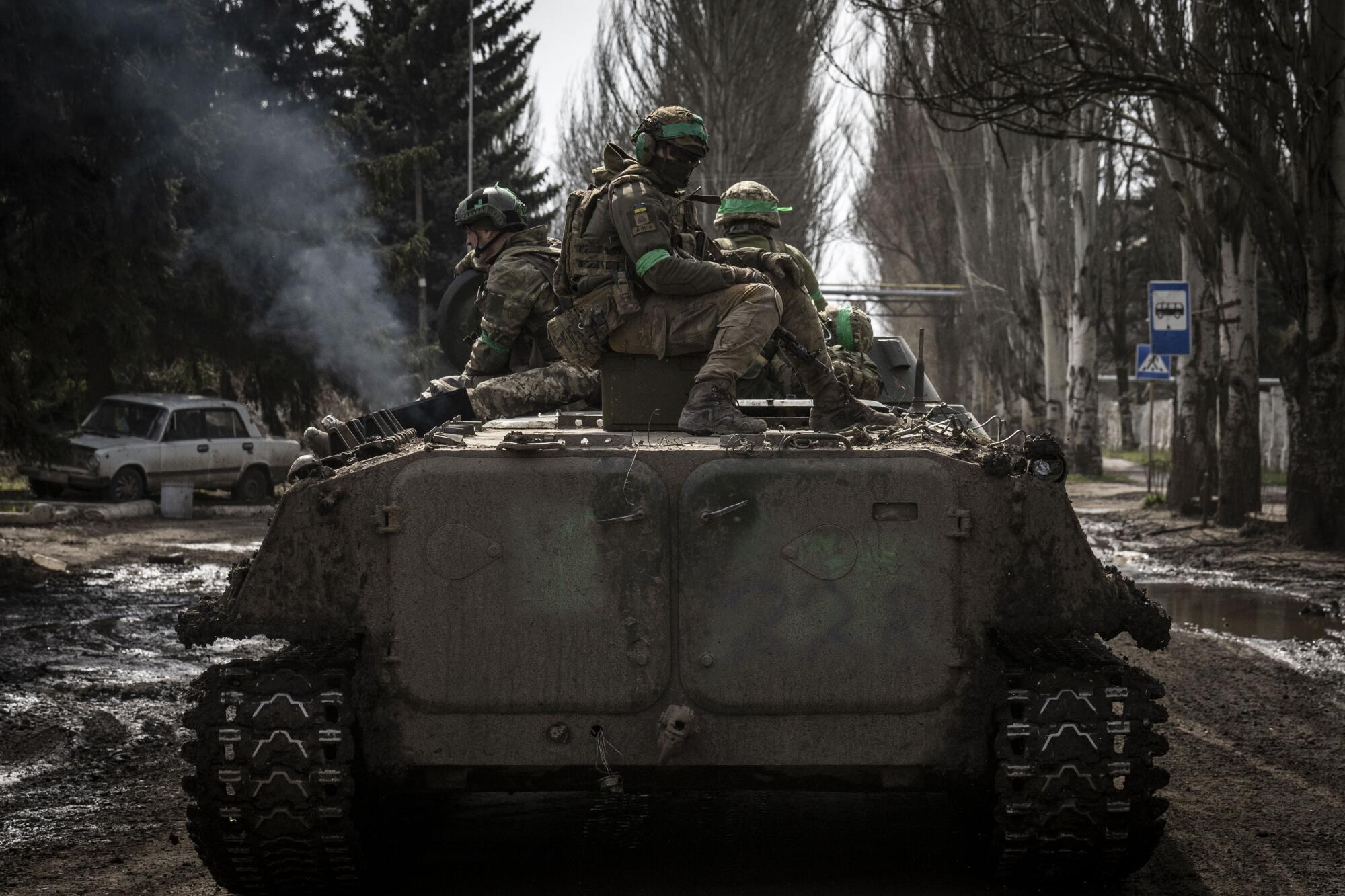
- Share via
OUTSIDE BAKHMUT, Ukraine — There had been a time when Oleg was excited to get behind the wheel of the tank. A sardonic 25-year-old, he’s been serving as a driver around the front lines of the war in eastern Ukraine since almost the beginning of Russia’s invasion last year.
But the novelty is long gone. The tank, a T-64 made in 1983, is older than he is — a relic of Ukraine’s Soviet past. Its engine needs at least 20 minutes to warm up from a cold start, and for every day of hard combat, it needs a day of maintenance. Its ancient optics mean the crew can’t fight at night.
Worst of all, it’s just plain slow.
“Driving one of these is like driving an old car. It’s an old Mercedes,” said a rather bored-looking Oleg, who gave only his first name in accordance with Ukrainian military policy. “I’m tired of it. I want something that goes faster.”
He may soon get his wish. He and the rest of the T-64’s crew, along with their comrades in other armored brigades, are impatiently waiting for the arrival of more modern tanks promised by Ukraine’s allies in the West — equipment the country says it needs as the spearhead of its spring counteroffensive.
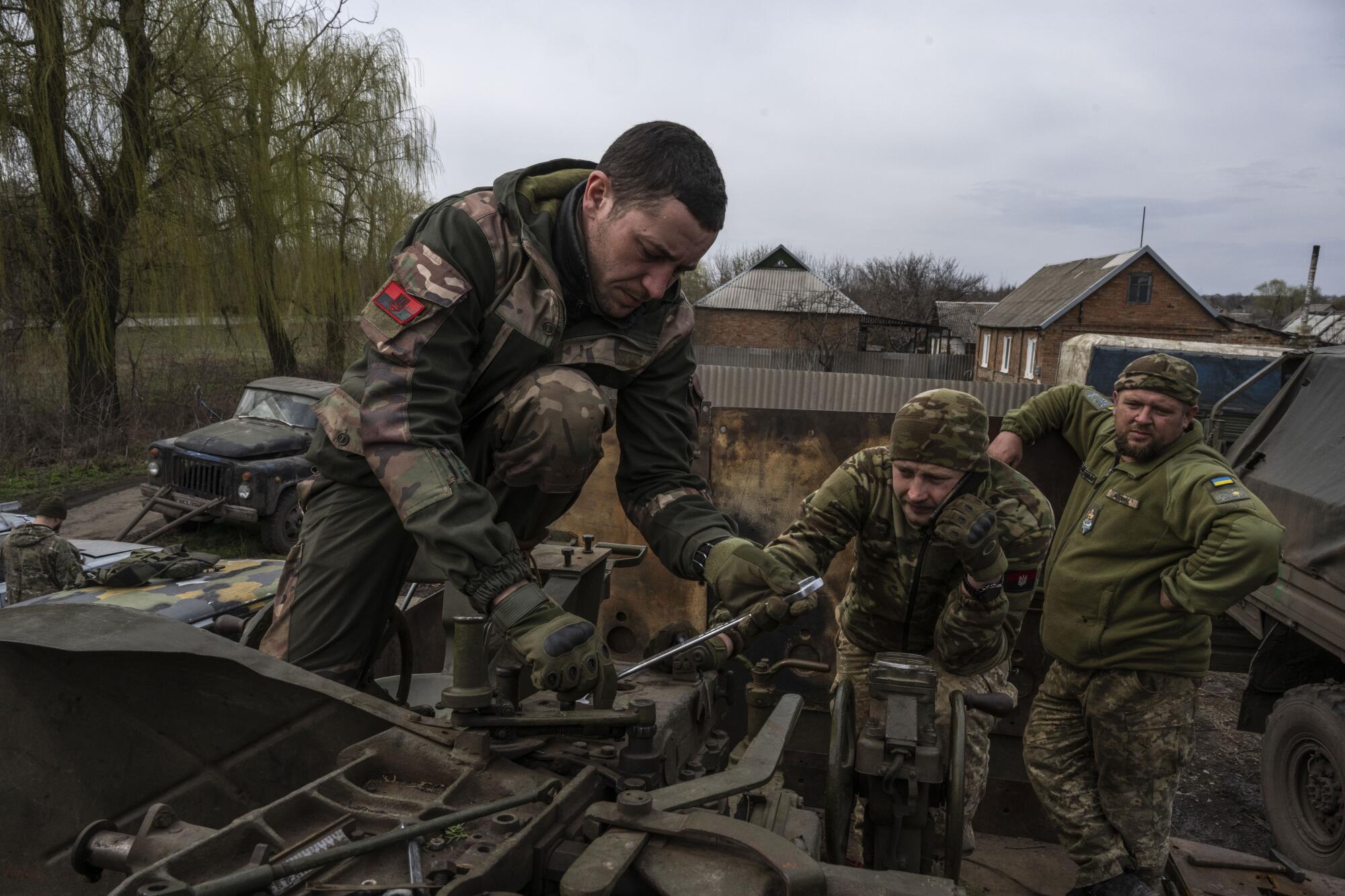
Kyiv had been clamoring for advanced battle tanks since last year, but the U.S. and other NATO countries delayed for months while debating whether providing them would provoke a Russian escalation, just as they had hesitated over long-range artillery and multiple-launch rocket systems — all of which they now supply.
Britain broke the logjam, promising 14 Challenger 2 tanks in January that have since arrived in Ukraine. Late last month, Germany delivered 18 Leopard 2 tanks, adding to Poland’s contribution of 14 so far; eventually the number of Leopard 2s will reach 100, along with at least 100 older Leopard 1s from Germany, Denmark, the Netherlands and possibly Belgium.
- Share via
Ukraine’s armored brigades wait for the arrival of more modern tanks, which the country says it needs to spearhead its spring counteroffensive.
Stryker infantry fighting vehicles and Cougar mine-resistant vehicles from the United States have also been in place since March, while the biggest plum of all, U.S.-made Abrams tanks — including refurbished M1A1 tanks and newer M1A2 models — will arrive in fall.
“Even a year ago, no one could have thought that the support of partners would be so powerful,” Ukrainian Defense Minister Oleksii Reznikov wrote on Facebook late last month, adding that the Challenger 2 was “more comfortable than a Rolls-Royce.”
The Ukrainian military’s surrender hotline, dubbed ‘I Want to Live,’ is enticing some Russian soldiers to quit the battlefield as the war drags on.
“Everything has changed this year. Ukraine changed the world.”
Kyiv is banking on the new hardware to turn the tide in a conflict that has been bogged down through the winter, with the tanks promising to be a significant upgrade compared with the Soviet-era materiel the Ukrainians possess or the newer Russian tanks they’ll face. The Western tanks have better armor, longer range, a faster firing rate and superior sighting systems. They’re also considered to be more maneuverable.
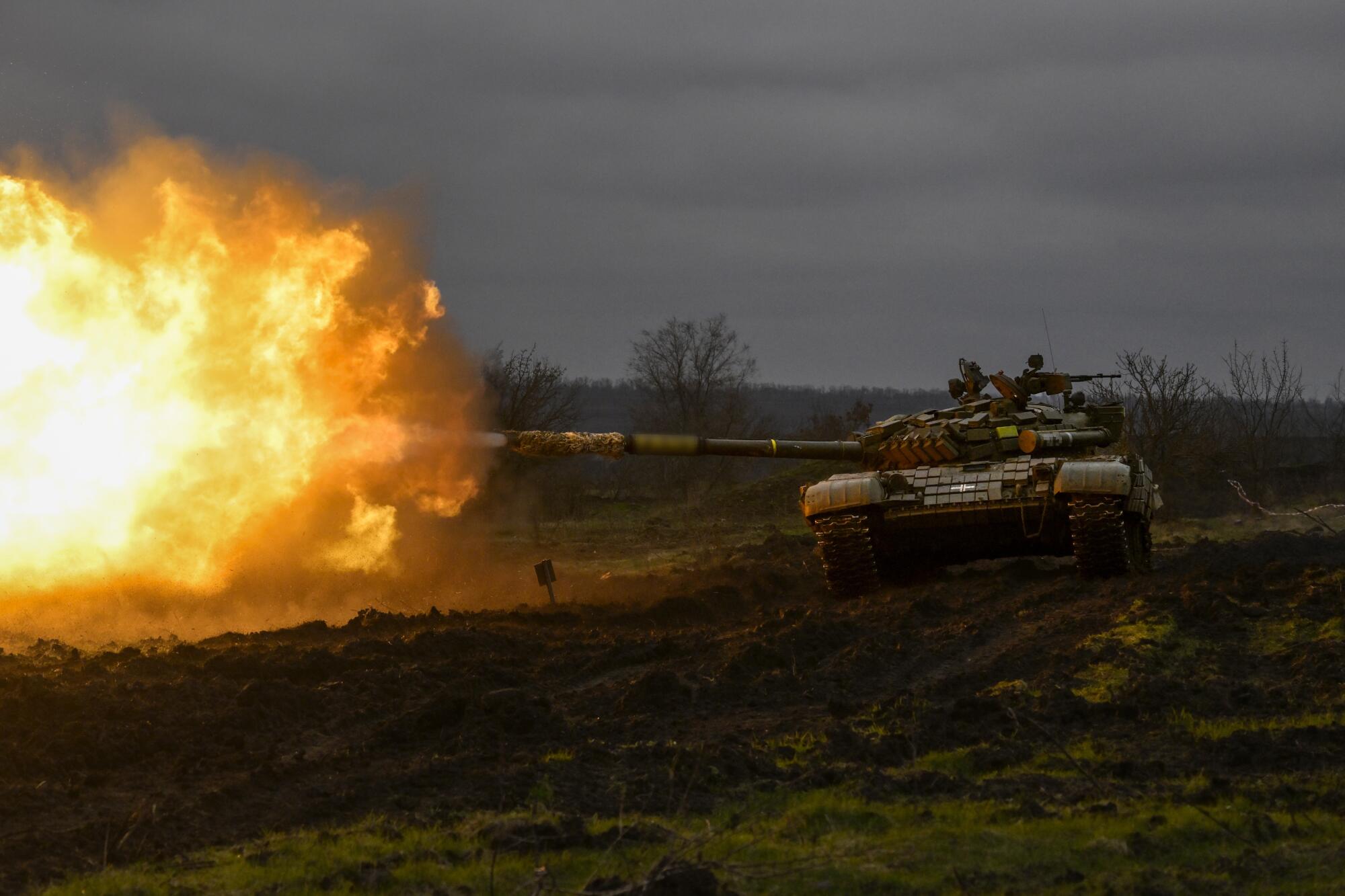
The foreign-supplied tanks have taken on the status of near-mythical creatures, with observers poring over social media in the hope of catching a glimpse of them in the Donbas, the eastern Ukrainian heartland where the fighting is at its fiercest.
They’re rumored to have already arrived there, and to have been disguised to look like Ukraine’s Soviet-era arsenal. Some surmise that the Ukrainian armed forces’ new media policy restricting journalists’ access to military units is about keeping the tanks’ location a secret ahead of the counteroffensive.
The static combat of the cold weather season has resulted in irregular action for tank driver Oleg and his crew mates. Their T-64 — nicknamed “Buhay,” or “Bull,” after its commander, an affable 32-year-old named Serhei — sat by the roadside one morning in the bitter cold, a heavy snowfall covering the dark-green plates on the tank’s exterior with a sprinkling of white.
During the Holocaust, a Ukrainian family hid a girl from the Nazis. Decades later, with Ukraine at war, her son and a community of strangers repay the kindness.
Just a few miles away lies Bakhmut, the eastern city that has been all but obliterated in the obsessive, months-long effort by Russian forces to capture it, though some outside military analysts question its strategic value. The Russians now surround Bakhmut from three sides, and in recent days appear to have escalated their assault, Ukrainian soldiers say.
The off-and-on fighting of the winter — and the need to conserve ammunition — meant that the Buhay’s crew was firing less than half the amount they’d used during the summer offensives.
“Sometimes we’ll stay here all day without going to shoot at all,” said Danylo, the 25-year-old gunner.
Start your day right
Sign up for Essential California for the L.A. Times biggest news, features and recommendations in your inbox six days a week.
You may occasionally receive promotional content from the Los Angeles Times.
“We eat in the tank, sleep in the tank, we read,” Danylo added, dipping down into Buhay’s interior and emerging with a Ukrainian copy of “A Clash of Kings,” the second book in the “Game of Thrones” series.
The shortage of shells meant Danylo couldn’t fire his gun from a distance as he would an artillery piece, the round arcing in a parabola. Instead, the Buhay would have to bear down and fire directly at Russian fortifications.
“Sometimes we’re less than 150 feet away,” he said. “Straight shot.”
How the Western tanks fare against their Russian counterparts will be closely scrutinized. The last major similar matchup was during the 1990-91 Persian Gulf War, when U.S. Abrams and British Challenger tanks squared off against Iraqi Soviet T-55s, T-64s and T-72s to devastating effect.
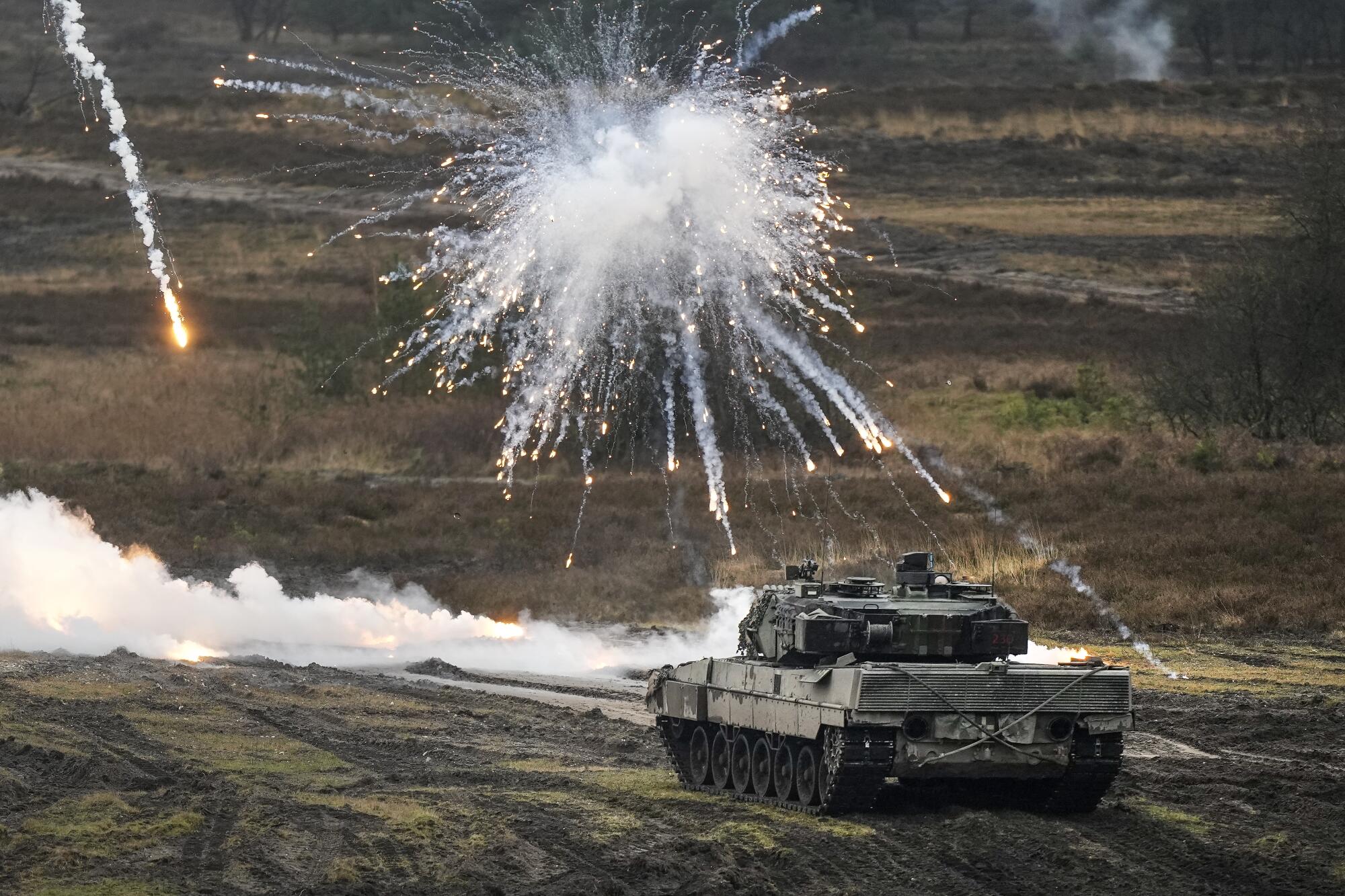
“They would take 10 shots from a T-72, whereas one shot from Western tanks would take out a T-72,” said Col. Hamish de Bretton-Gordon, a former commander of the British Royal Tank Regiment who saw action in that conflict.
He expects Western tanks to be a combat multiplier. Backed by artillery, drone and air support, they will probably take the lead in punching through enemy lines.
By most accounts, those lines are much-depleted. Russia, relying on antiquated tactics that had military experts questioning whether tanks have a place in modern warfare, has as of last week lost more than 1,900 tanks — including more than 500 captured — and more than 2,000 fighting vehicles, according to Oryx, a blog that tracks Russian armored losses through visual confirmation from open sources. Rather than fielding its new, much-vaunted T-14 Armata tank, Moscow has been forced to rely on T-55s designed in the 1950s — older than many of the soldiers’ parents — because of equipment shortages.
Another foe besetting both Ukrainian and Russian forces is a more elemental force — the mud that follows winter’s end, transforming wide swaths of the front line into swamps of brown ooze.
“It reaches up to here sometimes,” said Denis, 37, another tank driver near Bakhmut, putting his hand up to his waist. Beside him, the Buhay — he operates a similar vehicle — sported thick patches of mud on its tracks and sides. Visitors found their boots sucked down into the mire, emerging with a thick layer on the sole that became heavier with every step.
Denis complained that even tanks could lose up to three-quarters of their speed when traversing muddy terrain, making them easy prey for infantry armed with Kornets, Russian antitank guided weapons.
“That’s our biggest problem. When we see one in battle, it’s us or them,” Denis said.
Putin believes he can outlast the West, even as U.S., Europe show robust support, unity after a year of conflict
Both the Leopard and Challenger have higher ground clearance, said De Bretton-Gordon, making them less likely to get stuck. The Ukrainians have been training for months in England, Poland and elsewhere in preparation for the new vehicles’ arrival. It’s part of a larger effort to integrate the grab bag of Western weapons that NATO countries have provided for the counteroffensive.
De Bretton-Gordon expects the Russians to fare poorly.
“They’re fighting a First World War, where human mass is their tactic,” he said. “It didn’t work in 1914. And it’s certainly not going to work in 2023.”
Recent days have seen the Russians use that tactic multiple times a day in the battle for Bakhmut, according to several Ukrainian soldiers, with mercenaries from the private Wagner military contracting group leading the charge as shock troops to smash the line, while regular troops come behind them to mop up. The maneuver is vicious, and costly, but effective.
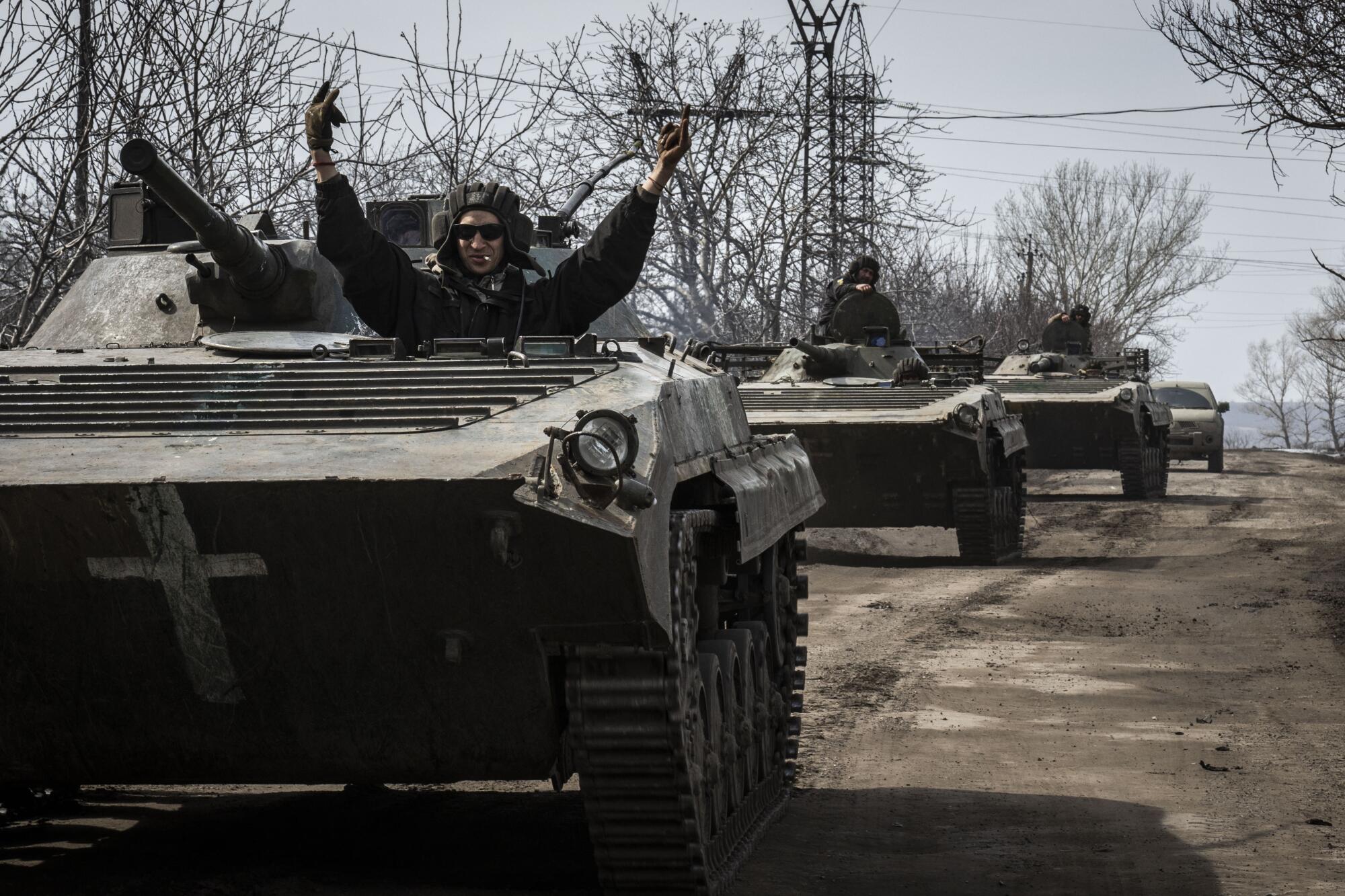
One recent morning, the Buhay’s crew was sent on a mission to bust Russian fortifications in the countryside areas near the only highway the Ukrainians can use to enter Bakhmut — or beat a hasty retreat.
“You always have fear before battle, but when it starts you feel nothing, you do your job, you’re just doing what you need to do,” Danylo said.
Before the invasion, he was working in a factory in another country assembling Nespresso machines. War brought him back to Ukraine. He and his crew mates have been fighting in the Donbas since March last year, in Kharkiv, Severo-donetsk and Lysychansk. (“That was a meat grinder,” Danylo said.)
When it’s all over, he won’t go work in a factory again. He plans to open a coffee shop in the city of Kryvyi Rih.
Russian atrocities number in the tens of thousands, Ukraine says. The ICC wants to arrest Putin. But what are the prospects for justice?
In the meantime, he was focused on the hunt — so much so that it made everything else background noise.
“The other day a 152-millimeter artillery round landed not 15 feet from the tank. We barely felt it,” he said.
A drone video of the fortification-busting mission shows farmland cratered by shelling into a Swiss-cheese landscape. Smoke envelops a Russian bunker hit by the Ukrainians; the Buhay, hiding near a copse, is somehow spared from bombardment by enemy forces. Flames belch out of its turret as Danylo fires a shot at the bunker that finds its target; he takes aim and lands another shot neatly beside the first one.
By noon, the crew was back at base. It had been quick work, but there would be little downtime.
“We’ll rest after we win,” Danylo said.
More to Read
Sign up for Essential California
The most important California stories and recommendations in your inbox every morning.
You may occasionally receive promotional content from the Los Angeles Times.


